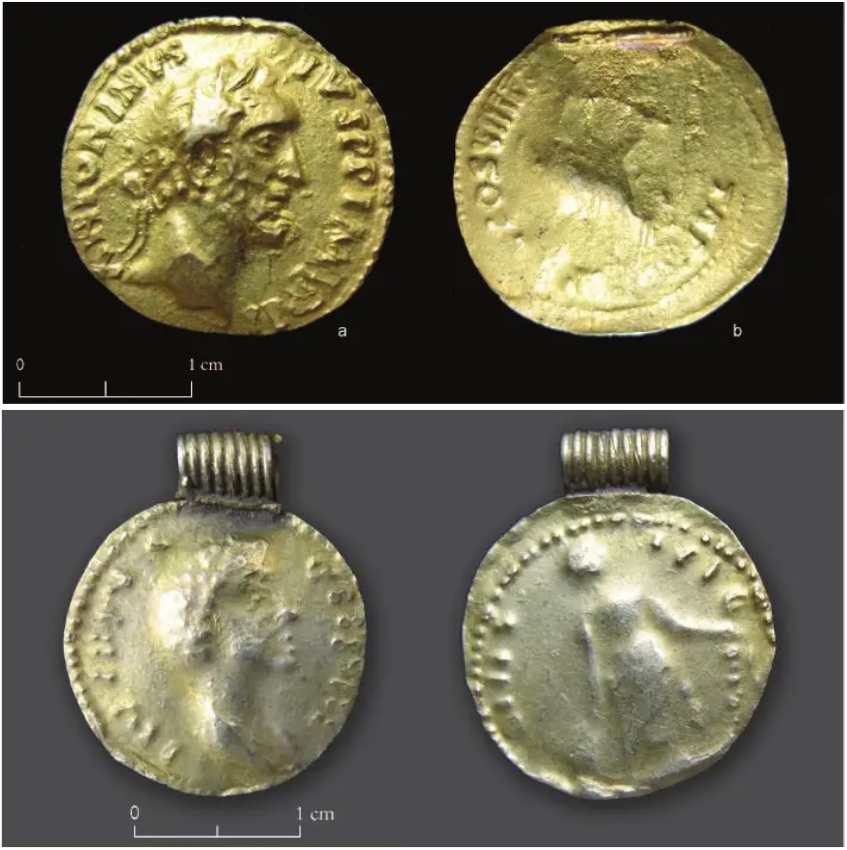If Ptolemy’s Golden Peninsula could be identified with the Thai-Malay peninsula, the city of Kattigara is bound to remain a mystery: it simply cannot be securely identified on the basis of the evidence we have at our disposal. Of course, this has not kept people from making more (or less) educated guesses. Based on the coordinates given by Ptolemy, a lot is possible.
Some have argued Kattigara must be equated with Saigon in Vietnam. This is not theoretically impossible, but Saigon only emerged as a settlement in the medieval period, and the oldest remains in the area belong to a temple dating to the fourth century CE. Others have linked Kattigara with the archaeological site of Óc Eo, also in Vietnam, but on the other side of the Mekong delta – and thus much closer to Thailand. At least, in this place, objects and structures dating to the first centuries of our era have been dug up, but there is no compelling reason to link these to the place mentioned by Ptolemy. We might as well give up. It is plausible, and perhaps likely, that Ptolemy’s Kattigara was somewhere in the Mekong region, but unless we find a place with the name Kattigara written all over it, this is as far as we will get.
Still, the Mekong delta, and particularly the excavations at Óc Eo, are highly relevant to our understanding of the ties between the Far East on the one hand and the Far West on the other. While the history of the region resembles that of Java in this period in that there are no textual sources from the area, it is clear that, by the time of Ptolemy, some kind of larger-scale polity existed in this place – it is commonly known under its Chinese name ‘Funan’, and seems to have emerged in the first century of our era, and continued to exist until the fifth century, and beyond.
While our understanding of ‘Funan’ remains limited and constrained by the Chinese perspective in the available sources, it is clear that the kingdom – which is what it supposedly was – was in frequent contact with China, and had continuous ties with India. It is also probable that Romans visited the area: both at Óc Eo, and at another high-profile site from the area, Angkor Borei in Cambodia, Roman coins have been found, and at Óc Eo, several other artefacts from the Far West, comparable to those discussed last week, have been discovered.

Yet the most surprising ‘Roman’ objects from the kingdom of Funan were not made in the Mediterranean, but in the kingdom itself. In several places in the region, including, but not limited to Óc Eo, locally produced pendants imitating Roman imperial coins have been found. That is to say, local metalworkers took the design of Roman coins, replicated it—not necessarily very precisely—and produced new objects on that basis, which they then could attach to a necklace. Apparently, for people in the region, Roman coins, with their detailed imagery, had a certain intrinsic aesthetic value.
Many people in Funan may not have known anything about the Roman Empire, but some of them happily walked around with Roman coins on their necklaces. They were not the only ones: similar ‘imitations’ can be found in India, and here, too, imitated Roman coins took the form of pendants. It is possible that the people of Funan simply copied something that they had seen in India. However, recent work has shown that the pendants of Funan were no imports—they appear to have been locally produced from Roman coins circulating in the area.
It is beyond fascinating: ancient historians have frequently emphasized the potential of Roman coins for propagandistic messagery within the empire, and this desire to communicate clearly articulated images of power transformed coin design in the first centuries of our era. Yet these pendants show how such imagery not only could but also did transgress cultural boundaries, and found new use in a world further away from the Roman emperor than many Romans may have been able to imagine.
B. Borell (2014), ‘The Power of Images – Coin Portraits of Roman Emperors on Jewellery Pendants in Early Southeast Asia’, Zeitschrift für Archäologie Aussereuropäischer Kulturen 6: 7-44.
Miko Flohr, 11/02/2020
